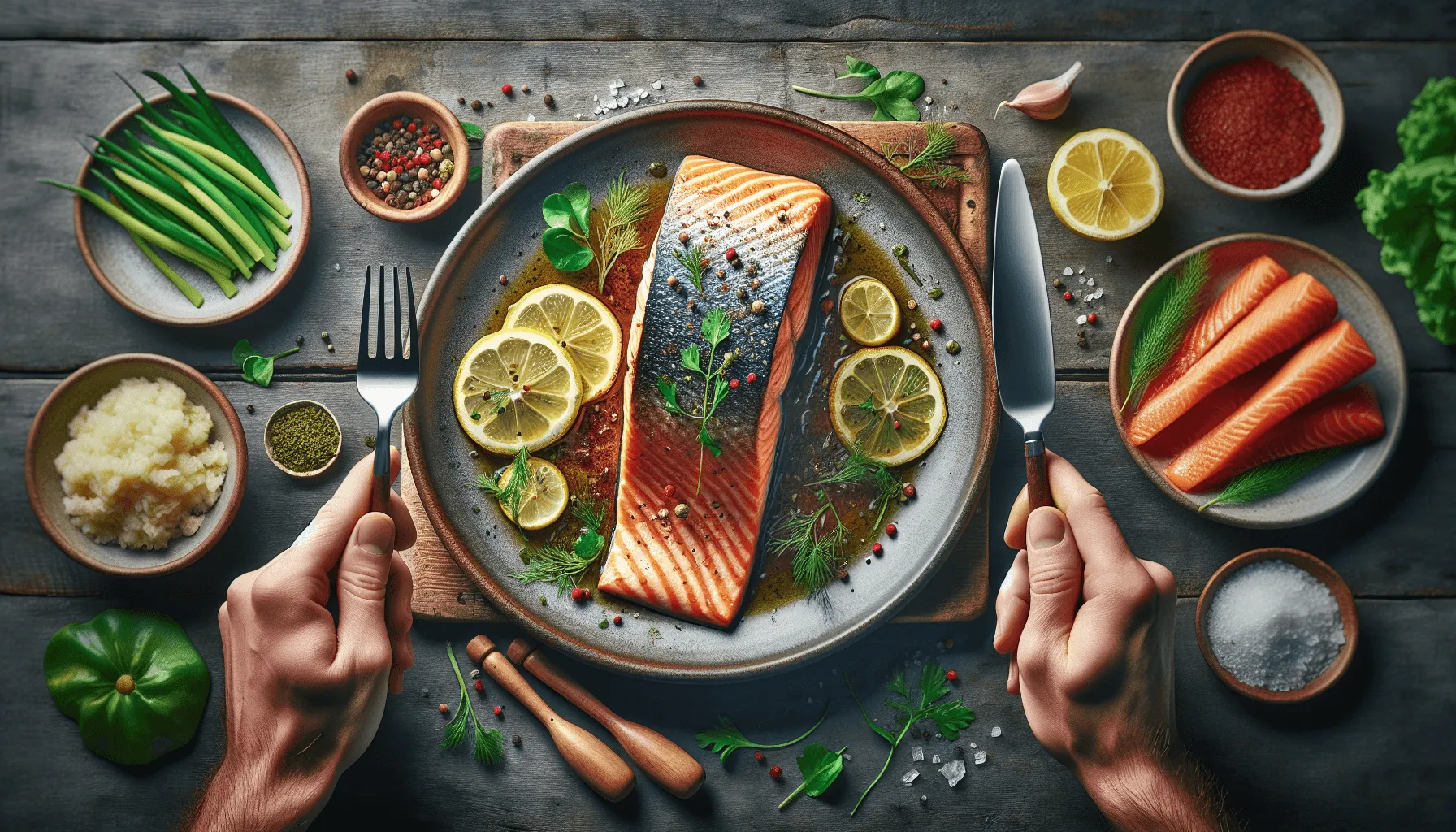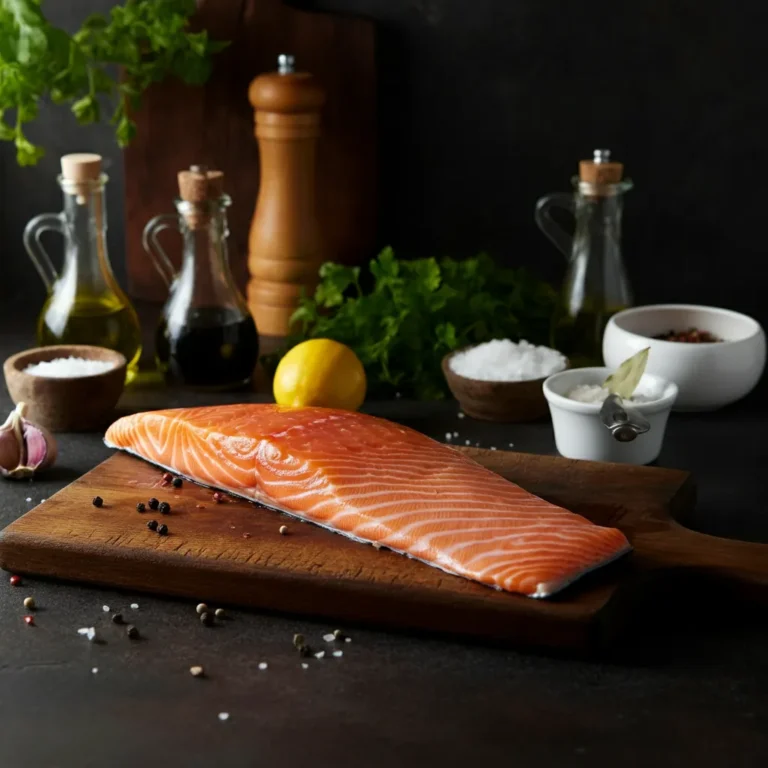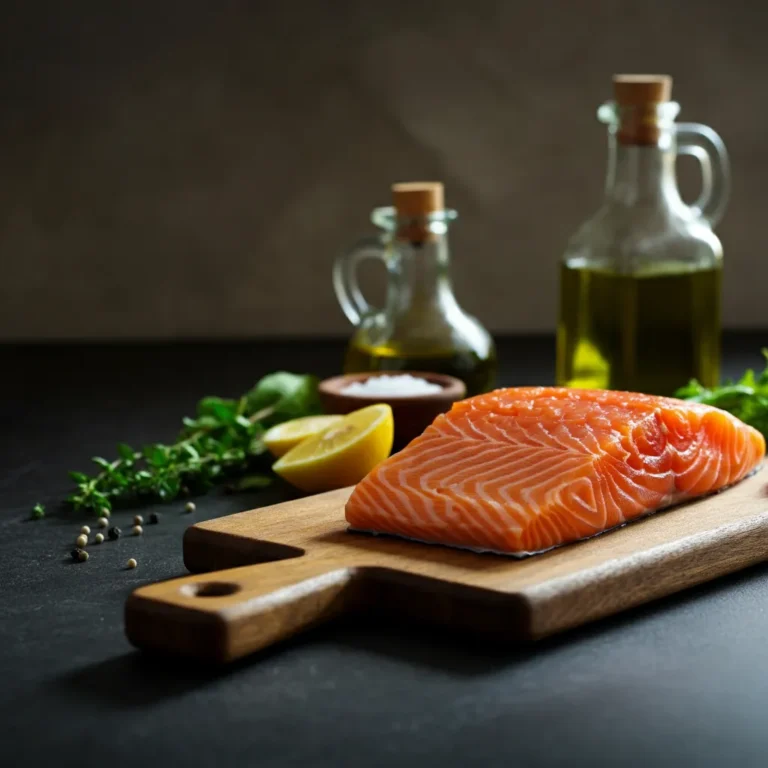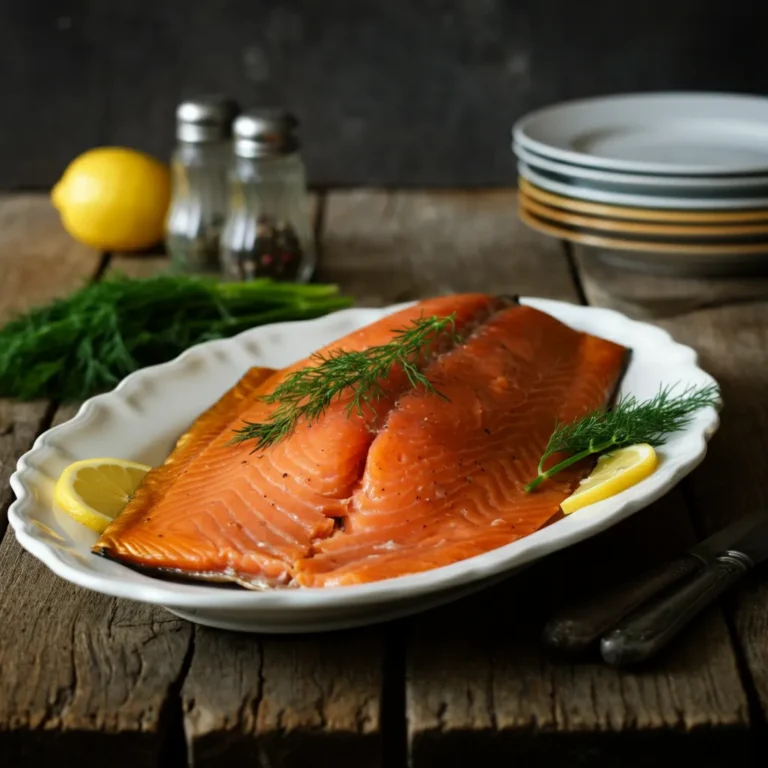Coho salmon, known for its delicate flavor and rich texture, is a favorite among seafood lovers. This versatile fish is loved not only for its taste but also for its health benefits.
Using the right cooking methods is essential to maintain the best flavor and texture of coho salmon. Baking, in particular, has several benefits:
- Convenience: Baking is easy and doesn’t require constant attention.
- Healthiness: This method avoids using too much oil or butter, making it a healthier choice.
- Consistency: Ensures even cooking, which is important for getting the perfect doneness.
Learning how to cook coho salmon in the oven can improve your cooking skills while providing a nutritious and tasty meal option. Try different coho salmon recipes to discover your preferred flavor combinations and techniques.
Nutritional Benefits of Coho Salmon
Coho salmon is known for its health benefits and has an impressive nutritional profile. It’s packed with omega-3 fatty acids, which are great for your heart, help reduce inflammation, and boost brain function. Here’s what you can typically find in a 3-ounce serving of coho salmon:
- About 140 calories
- 25 grams of protein
- Over 1,000 milligrams of omega-3 fatty acids
- Vitamins B12 and D
- Essential minerals like selenium and potassium
Wild salmon varieties like coho are especially good because their natural diet makes them even more nutritious.
Comparing Coho Salmon to Sockeye Salmon
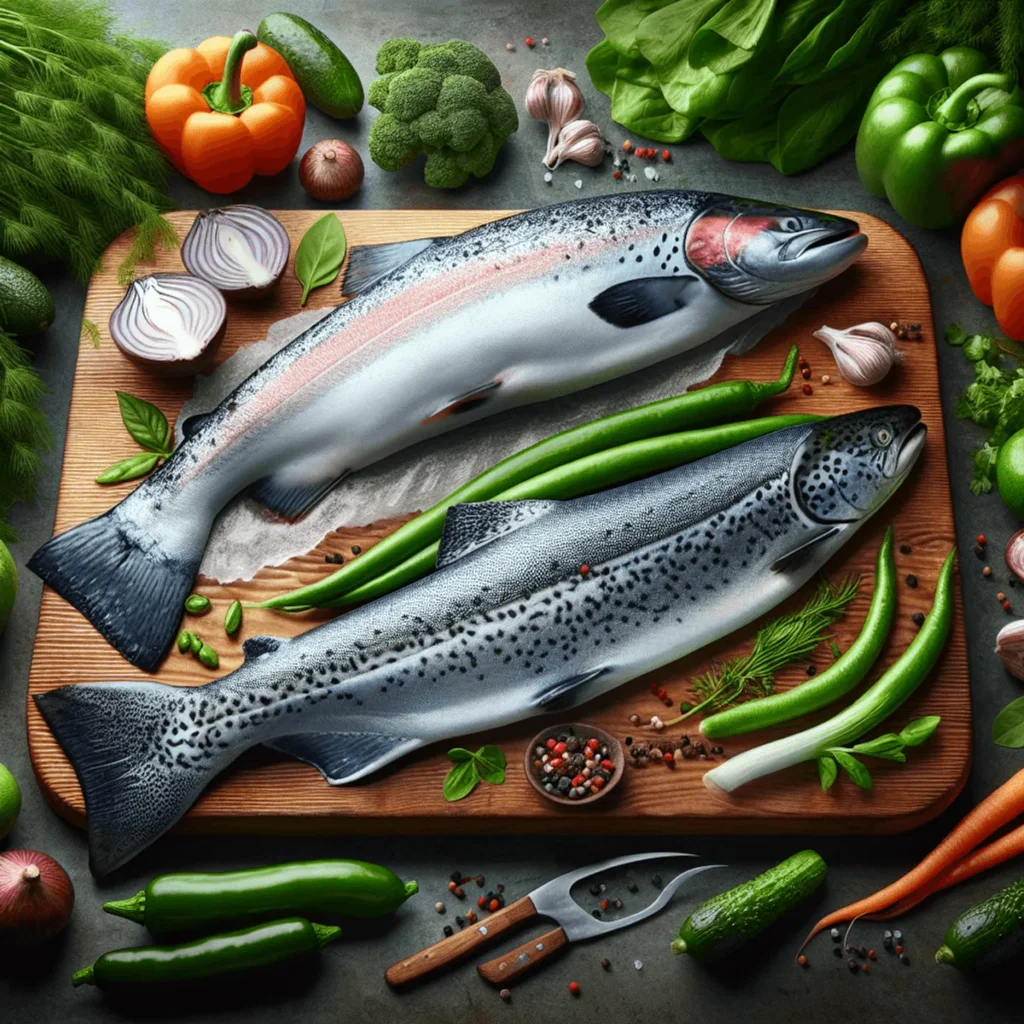
When you look at coho salmon alongside other types of salmon like sockeye, there are some noticeable differences. Sockeye salmon has a stronger flavor and deeper red color because it contains more astaxanthin. It also has slightly more omega-3 fatty acids per serving. But many people prefer the milder taste and softer texture of coho salmon.
Cooking with Coho Salmon
Coho salmon is incredibly versatile, making it perfect for different recipes. Whether you’re figuring out how to cook coho salmon in the oven or trying out new flavor combinations, you’ll still get all those amazing nutrients.
If you’re curious about how long to cook coho salmon in the oven, baking it is a great way to keep most of these nutrients intact while creating a tasty dish. Knowing how to bake wild salmon properly can really make a difference in preserving its valuable health benefits.
Preparing Coho Salmon for Baking
Selecting Fresh and High-Quality Coho Salmon Fillets
Choosing the right coho salmon fillet is crucial for a successful meal. Here are some tips to guide you:
- Visual Inspection: Look for vibrant, bright-colored flesh. The fillet should appear moist but not overly wet.
- Smell Test: Fresh coho salmon should have a mild scent. An overpowering fishy smell is a red flag.
- Firmness: Press gently on the fillet; it should spring back rather than leave an indentation.
- Skin Quality: If buying with skin on, ensure it looks shiny and intact without any signs of drying out.
Step-by-Step Guide to Preparing Coho Salmon Fillets
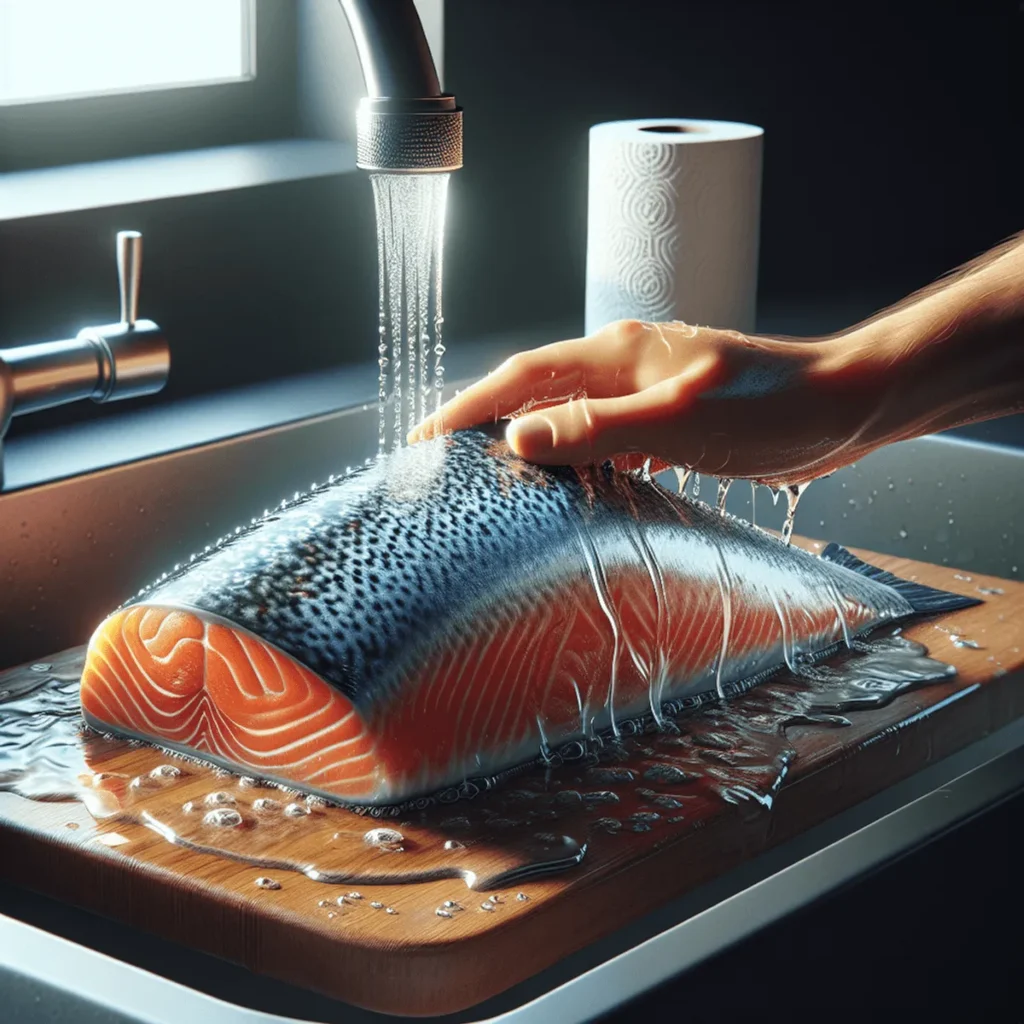
- Rinsing and Patting Dry: Start by rinsing the fillets under cold water to remove any residual scales or debris. Pat them dry with paper towels to ensure a crispier finish when baked.
- Skin Retention: Leaving the skin on helps retain moisture during baking. It also makes handling easier and adds flavor.
- Seasoning Coho Salmon:
- Basic Seasoning: Lightly coat the fillets with olive oil, then sprinkle salt and pepper evenly.
- Flavor Enhancements: Consider adding lemon slices, fresh herbs like dill or thyme, and minced garlic for added taste complexity.
- Marinating (Optional): For deeper flavor penetration, marinate the fillets in your seasoning mix for 15-30 minutes before baking.
Proper preparation sets the stage for a delicious baked coho salmon dish that’s both flavorful and nutritious.
Essential Baking Techniques for Coho Salmon
Importance of Preheating the Oven
Preheating your oven is a crucial step when learning how to bake coho salmon in the oven. It ensures that the fish cooks evenly, preventing hot spots that can lead to uneven doneness. Set your oven to 375°F (190°C) or, for a quicker cook time, 400°F (204°C). A consistent temperature throughout the cooking process helps in achieving that perfect flaky texture.
Recommended Cooking Time Based on Thickness
When considering how to cook coho salmon in the oven, the thickness of the fillet plays a significant role:
- For medium-rare doneness, aim for an internal temperature of around 120°F (49°C). This usually means baking the salmon for about 8-10 minutes per inch of thickness.
- For well-done salmon, you should look for an internal temperature closer to 140°F (60°C), and this typically requires 12-15 minutes per inch of thickness.
Keep an eye on the color and texture: the salmon should be opaque and easily flake with a fork when done.
Using an instant-read thermometer can help you achieve precise results, ensuring your coho salmon is cooked just the way you like it.
Flavor Enhancements and Serving Suggestions for Baked Coho Salmon
Popular flavor combinations can elevate the taste of baked coho salmon. One classic pairing is the lemon dill combination. Simply drizzle the fillets with lemon juice and sprinkle fresh or dried dill before baking. For a more savory twist, consider a teriyaki glaze. Brush the salmon with a homemade or store-bought teriyaki sauce, adding a touch of sweetness and umami.
Another delightful option is a garlic butter sauce. Melt some butter in a saucepan, add minced garlic, and pour this aromatic mixture over the salmon before it goes into the oven. This baked coho salmon recipe ensures the fish remains moist while infusing it with rich flavors.
Suggested Side Dishes
Pairing baked coho salmon with complementary sides enhances the meal:
- Steamed Vegetables: Broccoli, asparagus, or green beans provide a fresh contrast to the rich flavors of the fish.
- Grains: Quinoa, wild rice, or couscous make for hearty accompaniments that absorb any extra sauce.
- Salads: A simple mixed greens salad with a light vinaigrette keeps the meal balanced and refreshing.
Combining these elements creates a well-rounded dining experience that highlights the versatility and deliciousness of baked coho salmon.
Storing and Reheating Leftover Baked Coho Salmon
Proper Storage Methods
Keeping your baked coho salmon fresh is essential. Use airtight containers or vacuum-sealing bags to store the fish. These methods help to:
- Prevent air exposure: Reducing air contact keeps the fish moist and flavorful.
- Extend shelf-life: Properly stored salmon can last in the fridge for up to 3-4 days.
For longer storage, consider freezing. Wrap the fillets tightly in plastic wrap before placing them in a freezer-safe bag.
Reheating Techniques
Reheating without drying out the fish requires gentle methods. Here are some practical tips:
- Oven Method: Preheat your oven to 275°F (135°C). Place the salmon on a baking sheet, cover it with foil, and heat for about 15 minutes. This method is similar to baked salmon in foil, which helps retain moisture.
- Stovetop Skillet: Use a non-stick skillet over low heat, much like when making a skillet-grilled catfish. Add a splash of water or broth to maintain moisture, then cover and heat for a few minutes.
These techniques ensure your leftover baked coho salmon remains tender and flavorful.
Tips for Perfectly Baked Coho Salmon Every Time
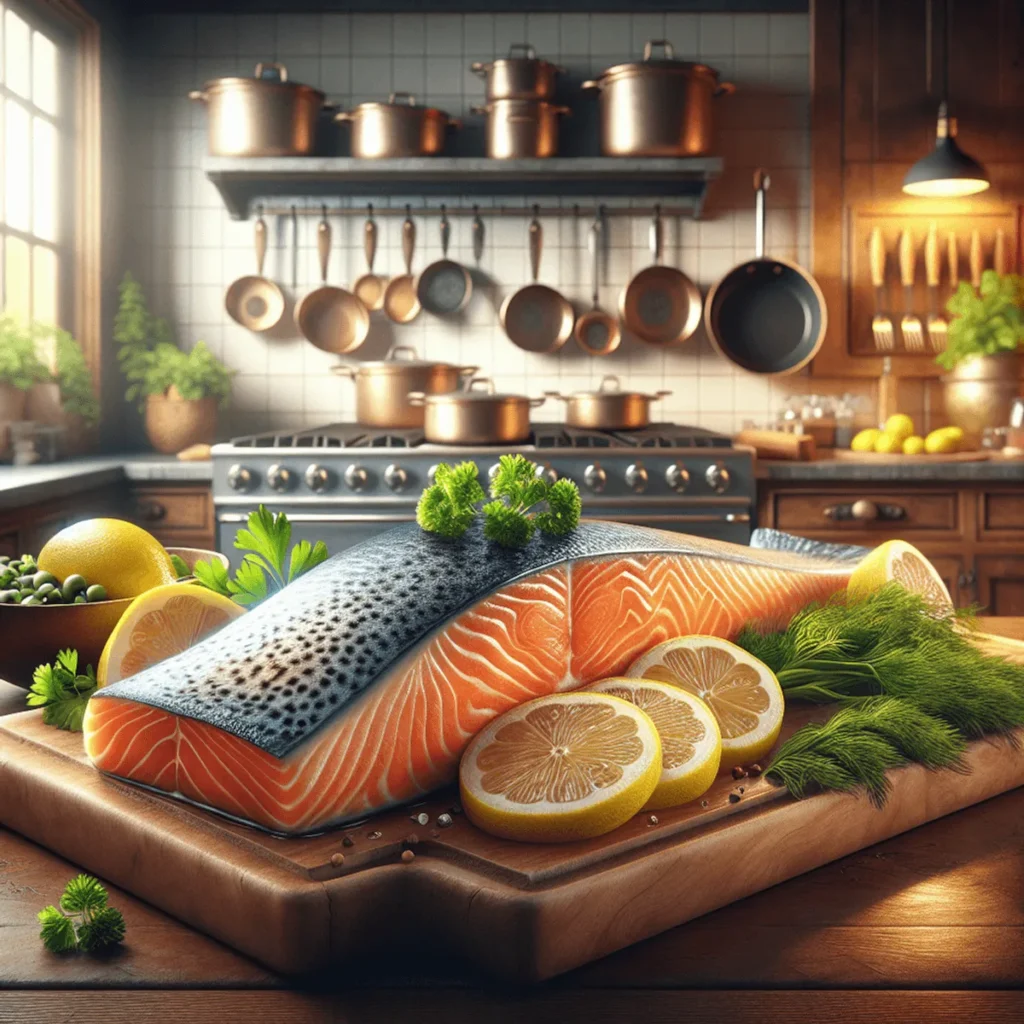
When baking coho salmon, a few common mistakes can compromise your dish.
Common Mistakes to Avoid
- Overcooking: This is the quickest way to dry out your fish. Always aim for an internal temperature of around 120°F (49°C) for medium-rare. Using an instant-read thermometer can help you achieve perfect doneness.
- Under-seasoning: Coho salmon has a delicate flavor that benefits from proper seasoning. Ensure you use enough salt, pepper, and other seasonings like garlic and herbs to enhance its natural taste.
Optional Broiling Technique
For a crispy finish on top, consider broiling your coho salmon briefly at the end of the baking time:
- After baking, switch your oven to the broil setting.
- Place the salmon on the top rack.
- Broil for 1-2 minutes, keeping a close eye on the fish to prevent burning.
These tips ensure that your easy salmon recipe will turn out perfectly every time, making it one of your go-to quick dinner ideas. Knowing how to cook coho salmon in the oven effectively enhances both flavor and texture. For those interested in achieving that perfect crispy finish, you might want to explore some additional insights on broiled salmon filets.
Conclusion
Cooking coho salmon in the oven is a straightforward process that yields delicious results. By experimenting with various seasonings and techniques, you can create a wide range of flavors to suit your palate. Whether you prefer a simple lemon-dill combination or a bold teriyaki glaze, this versatile fish adapts well to different culinary styles.
Embrace these methods and enjoy the rich taste and health benefits of this exceptional fish.
FAQs (Frequently Asked Questions)
What are the nutritional benefits of coho salmon?
Coho salmon is rich in omega-3 fatty acids, which are beneficial for heart health. It also provides high-quality protein and essential vitamins and minerals, making it a healthy choice compared to other types of salmon, like sockeye.
How should I prepare coho salmon for baking?
To prepare coho salmon for baking, select fresh fillets, retain the skin if desired, and pat the fillets dry with paper towels. This helps ensure even cooking and enhances flavor absorption.
What is the recommended cooking time for coho salmon in the oven?
The cooking time for coho salmon depends on its thickness. Generally, bake at 375°F (190°C) for about 12-15 minutes per inch of thickness to achieve medium-rare doneness. Adjust accordingly for well-done.
What flavor combinations pair well with baked coho salmon?
Popular flavor combinations include lemon dill and teriyaki glaze. These enhance the natural richness of coho salmon and can be complemented by side dishes like steamed vegetables or rice.
How should I store and reheat leftover baked coho salmon?
Store leftover baked coho salmon in airtight containers or vacuum-sealing bags to maintain freshness. When reheating, use low heat in an oven or stovetop skillet to avoid drying out the fish.
What common mistakes should I avoid when baking coho salmon?
Common mistakes include overcooking or under-seasoning the fish. To achieve a crispy finish, consider using a broiling technique briefly at the end of baking.

